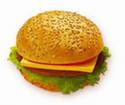Структура урока построена верно: орг. момент, фон. зарядка, речевая разминка, основная часть урока, физкультминутка, рефлексия, заключительная часть урока. Учебный материал соотвествует учебной программе, а также возрасту учащихся. Главной целью урока было: ознакомление учащихся с НЛЕ по данной теме, познакомить учащихся с режимом питания британцев, а также актуализация навыков говорения, чтения, письма. Формы работы на уроке: фронтальная, парная, индивидуальная. На уроке задействованы все виды речевой деятельности: говорение, письмо, чтение, уаудирование (речь учителя). Активность детей на уроке высокая. Также на уроке использовались ТСО: презентация, проектор, компьютер, что способствует более быстрому и качественному усвоению учебного материла. Цели урока достигнуты, маттериал усвоен.
Создайте Ваш сайт учителя Видеоуроки Олимпиады Вебинары для учителей
Любимая еда родственников
Вы уже знаете о суперспособностях современного учителя?
Тратить минимум сил на подготовку и проведение уроков.
Быстро и объективно проверять знания учащихся.
Сделать изучение нового материала максимально понятным.
Избавить себя от подбора заданий и их проверки после уроков.
Наладить дисциплину на своих уроках.
Получить возможность работать творчески.
Просмотр содержимого документа
«Любимая еда родственников »
Похожие файлы
Полезное для учителя
Распродажа видеоуроков!
1850 руб.
3080 руб.
1510 руб.
2510 руб.
1510 руб.
2510 руб.
1660 руб.
2770 руб.
ПОЛУЧИТЕ СВИДЕТЕЛЬСТВО МГНОВЕННО
* Свидетельство о публикации выдается БЕСПЛАТНО, СРАЗУ же после добавления Вами Вашей работы на сайт
Удобный поиск материалов для учителей
Проверка свидетельства

 : - I think it would be interesting to you to know about one of the most popular British dishes - sandwich. Let’s read the text ex 34p.133 and find out what sorts of sandwiches we have and how to make them.
: - I think it would be interesting to you to know about one of the most popular British dishes - sandwich. Let’s read the text ex 34p.133 and find out what sorts of sandwiches we have and how to make them. 














